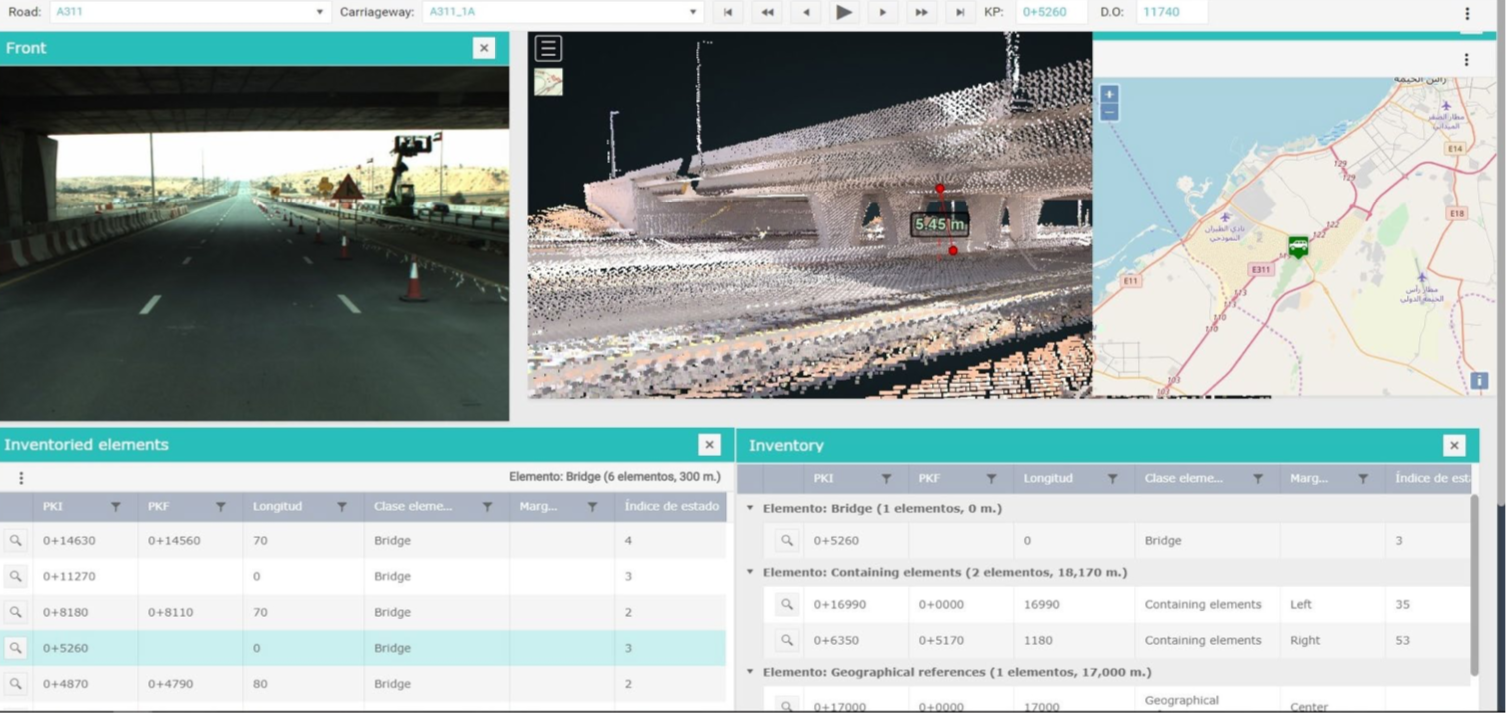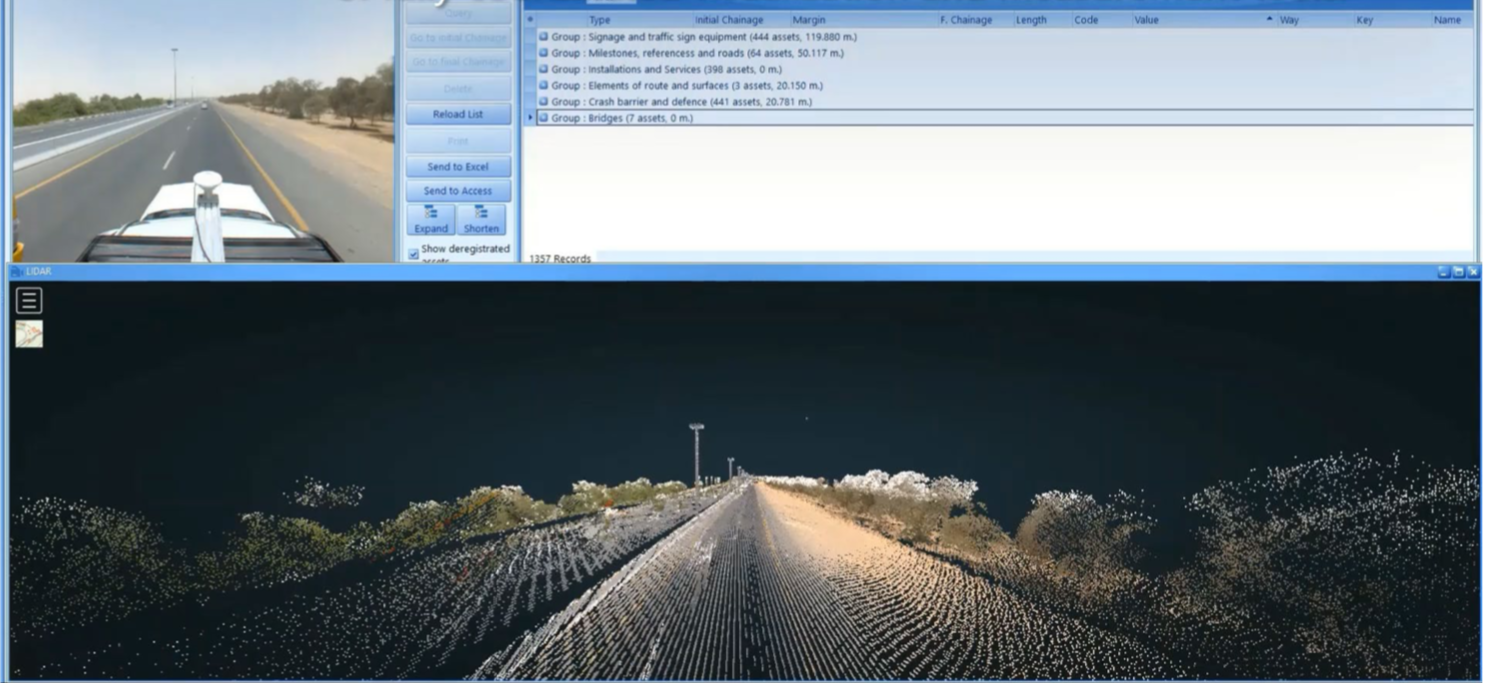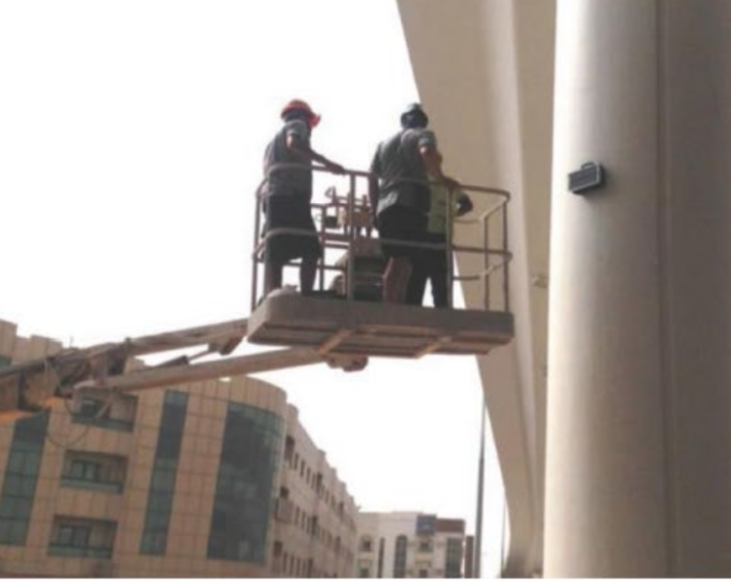Three more smart cities in traffic management: Las Vegas, Dubai and Shenzhen
What makes a city truly smart is its traffic management operations… part two
In the second of this two-part feature Intertraffic spoke to the cities that we believe are indeed the smartest in the world from a traffic management operations (TMO) perspective and asked their representatives just what it is that makes their cities so smart. In part one we had examples from Perth, Moscow and Mexico City and now in part two we present:
1.Smart intersections in Las Vegas, Nevada
2.Asphalt data in Dubai, UAE
3.Citizen-centricity in Shenzhen, Guangdong province, China
Here’s a reminder of how we came to choose these six cities.
What is in fact smart? Enter the search term “smartest city in the world” into Google and two things are a certainty. One, there’ll be more than 20m results and two, you will be told that it’s Singapore. Or London. Or Zurich. Or Copenhagen. However, expert opinion will tell you that these essentially arbitrary lists have no real meaning unless we define what is meant by “smartest”.
If by smartest we mean “most intelligent traffic management operations” then you won’t necessarily find such a list in a search engine, however Amsterdam and Los Angeles have both made headline news this year with their ambitious traffic management plans. To obtain such a list one has to canvass the aforementioned expert opinion and combine it with extensive research and industry knowledge before compiling the world’s six smartest cities from a traffic management perspective, while also taking into consideration the fact that the citizens of and visitors to those cities are probably only aware of just how smart they are when something goes wrong. For the vast majority of the time the city’s smartness is imperceptible to the human eye.In part one we spoke with Tony Earl from Main Roads Western Australia about Perth, José Azcárate of Mexico City and Olga Smirnova, International Relations Coordinator, Department of Transport and Road Infrastructure Development, Moscow. In part two we hear from Bob McQueen about Las Vegas’s Project Blackjack, Daniel Llort and Shafiya Alkhyeli of the UAE’s Ministry of Energy and Infrastructure and last but not least about Shenzhen from Huawei’s Li Zi Xiao
1.Smart traffic management in Las Vegas, Nevada: enhancing the user experience
When it comes to traffic management, the city of Las Vegas proves that you don’t have to be big to be smart. The next-generation traffic management system installed around the Las Vegas strip is more than a technology advance, it is also a business model led by the private sector. Cisco, the Internet giant, has a specific interest in smart cities and smart communities. This interest was manifested in an investment of approximately $4 million from the Cisco digital acceleration fund. This enabled the implementation of Project Blackjack.
This goes beyond advanced traffic management to deliver the core components of a next-generation smart mobility solution for a city. It has a unique combination of advanced traffic signal control, state-of-the-art detection, and high-bandwidth communications.
It also enables the delivery of superior capabilities to manage traffic flow and to coordinate smart mobility across the city. It also features support for connected and autonomous vehicles, providing the foundation for future traffic management and integrated multimodal management. Selected intersections have also been equipped with Lidar enabling a detailed assessment of pedestrian behaviour intersections including actual times required to cross the road and number of pedestrians waiting to cross. This is an essential component in the move towards improving equity in transportation design. Instead of assuming an average walk speed for all pedestrians, the system can customize pedestrian phase time to the characteristics of the individual pedestrian.
V2V, V2I
Each intersection is equipped with Dedicated Short-Range Communications (DSRC), wireless transceivers that enable vehicle-to-vehicle and vehicle-to-infrastructure communication. These are also capable of supporting the emerging standards for cellular vehicle to infrastructure communications. Alongside the wireless transceivers, Lidar sensors are used to provide a complete picture by tracking pedestrian movements. The solution enables the operation of a smart corridor of intersections in Las Vegas city. This enables traffic signal engineers and transportation managers to deliver a variety of use cases to improve safety, sustainability, and the user experience (i.e., traffic signal control that is coordinated across intersections, a public interface on traffic management, self-driving cars for medical appointments, and improved asset management, among other things.
Blackjack aggregates and normalizes all the data from sensors and rolls it up to the city of Las Vegas's data centre. As a next step, data from Clarke County, the city of Henderson, and the Regional Transport Commission will be combined with data from the city of Las Vegas to create a central data repository for the state of Nevada. A central data repository will enable multimodal management of transportation, linking together cities, local governments, and tourist and transportation hubs (i.e., Las Vegas Convention Centre, Las Vegas airport) to generate data on where and how people are travelling around the state.
The central data hub will generate actionable insights from state-wide data to make mobility more efficient, safer, and greener. Las Vegas is one of the tourism capitals of the world and this initial private sector investment will form the foundation for an integrated smart mobility system that addresses the needs of visitors and citizens.
From traffic play to economic strategy
Expansion and enhancement are expected to include the use of location intelligence and connected vehicle data to determine global, national, and local trip making patterns associated with tourism. What started out as a traffic and transportation play, will rapidly turn into an economic development strategy to enhance Las Vegas’s already formidable reputation as one of the world’s foremost tourism destinations.
A major feature of this enhancement and expansion will give accelerated insights using advanced data collection sensors and information processing technology to build a detailed picture of variations in the demand for transportation and operating conditions. Citizens and visitors alike can look forward to an enhanced user experience that matches quality transportation service delivery with world-class customer service, as you would expect in Las Vegas. Intriguingly, the implementation sets the scene for a new degree of cooperation between the public and the private sector.
2.Smart traffic management in Dubai - Al & IoT aiding Traffic management operantions in the UAE
The Ministry of Energy and Infrastructure (MoEI) is responsible for the maintenance and operation of 1,000km of centre line highways in the Emirates of Sharjah, Ras Al Khaima, Fujairah, Ajman and Umm Al Quwain in the United Arab Emirates. The Ministry’s Daniel Llort MacDonald and Shafiya Alkhyeli take Intertraffic behind the scenes of a uniquely technical traffic management operation.
“As per the structure and location of those highways, they have a very important role within the economic development for the country, especially in tasks related to construction or goods transportation to the Emirates in the Southern part (Dubai and Abu Dhabi),” says Llort.

“One characteristic of these highways is the high volume of heavy trucks moving on them. These trucks mainly come from the quarries and cement factories and ports located in the Northern Emirates. This led the Ministry to focus more on the prevention mode for maintenance and operation,” he continued.
Data collection for some parameters become critical when analyzing and predicting situations, Alkhyeli adds, so in order to apply the best practices in those specific tasks specialized hardware and software have to be used.”
Long-term Traffic Management Operations development
MoEI has developed software that works as base for the long-term decisions related to the management of the assets (tangible and intangible, as traffic and safety). This software was initially installed in 2012 in the Ministry and developed from that time.
“The software can store, analyze and process information related to the geometry of the roads, the inventory of the assets and their condition, pavements and their condition, rock slopes and their condition, traffic information (volumes and classification), accidents, and daily maintenance for unexpected events,” Alkhyeli explains. “All the information can be related and represented since every single piece of data is correlated through geographical references obtained by GPS (using WGS84 system) and odometers.”
The system can produce reports and GIS layers to represent the data, and as well can be exported to a Dashboard to show the information summarized.

Says Llort: “The forecasting contained within the software is formed by different Artificial Intelligence tools that self-learn from the periodic data collection process collected from the hardware I will cover shortly. There is also a mobile application that records and synchronizes the events database for the daily maintenance (produced by the unexpected events occurred in the roads), bridge and slopes inspections and so on.”
Traffic management hardware
In terms of traffic management hardware there are different technologies in play that are collecting information to feed the system. These technologies are different in accordance with the nature of the data collected. For pavements and asphalts high performance vehicles are used (for inventory and geometry collection using and 360 degree photogrammetry.
“Additionally, some other vehicles are used to collect the asphalt and pavement data (such as laser profilometers, laser scan cameras and deflectometers), which is necessary to do the forecasting for the pavement condition and prediction for maintenance and management activities.”

Automatic vehicle counting stations provide current and historical information about the vehicles using the network, providing very useful parameters in order to calculate pavement rehabilitation or information to manage the traffic and predict behaviour.
“To complement the inspections performed by specialized engineers, there are real life sensors reporting life conditions for bridges to improve the accuracy and effectiveness for the rehabilitation projects that have been implemented. The readings provide, in some cases, the real variability of parameters of interest and then, the best way to correct them to increase the bridge’s life span,” says Alkhyeli.
3.Shenzhen - Citizen-Centric smart traffic management
Shenzhen is one of the fastest growing cities in China. The population of Shenzhen is currently just over 12 million but is expected to reach over 15 million by 2035. With such a rapid increase in population the city has to ensure that its citizens’ mobility options remain accessible and available. As with China’s other 160 cities with a population of more than a million people, the secret to keeping Shenzhen moving is to place similar emphasis on all transport modes, but at the heart of any smart operation is one long word but simple ethos: citizen-centricity.
Li Zi Xiao, Huawei Technologies’ Global General Director of Land Transport and Logistics has been working closely with the city on its traffic management operations and, thanks to our colleagues at Intertraffic China, he was able to provide a fascinating insight into how this rapidly evolving city manages its traffic.
“In terms of its traffic management operations, the City really thought about its citizens – it’s not just the vehicles that need managing, it’s the people too. Traffic management also encompasses the Shenzhen Metro, the city’s rapid transit system and the fourth longest in the world. The latest extensions to the network opened in October 2020, and there is now 411 kilometres (255 miles) of track operating across 11 lines with 283 stations. By 2030 the Metro will comprise 8 express and 24 non-express lines totalling 1,142 kilometers of track.”
With the citizen in mind
The City of Shenzhen is ensuring that there is equilibrium between its rapidly increasing population and its need to be mobile.
Says Li: “The information technology sector has played a major part in this, regarding smart traffic management operations, and helped significantly in the efforts to improve the city’s traffic levels. We now have all kinds of public comprehensive command centres and we gather all the public transport mode information together in order to manage it efficiently. More than 20,000 video cameras have been installed to monitor the roadway traffic and help Shenzhen manage its operations successfully.”
He continues: “Using these techniques we can give a far more accurate picture of the traffic conditions – drivers’ awareness of the traffic situation is also vastly improved so they don’t join a jam! Everything operates centrally from one map so we all know the city's current traffic information, whether it’s from the road, the bus or the metro. It’s all in one picture and the key statistics are not limited to daily figures but weekly, monthly and yearly so we can identify patterns and predict traffic levels for the next 24 hours or next week, thanks to big data video analytics.”
Seamless border crossing
Another recent technological implementation that is helping to keep Shenzhenites moving is a free flow intra-China border-crossing project.
Says Li: “Previously to drive from one province to another we would need to stop the car and manually punch a card to cross the border. Now we're using free flow technology when we cross the provincial border and we do not need to stop at the tolling station. The bills are automatically split between operators, drivers and passengers save a lot of time and the reduction in queues means reduced carbon emissions so it is better for the environment. All of this means that the operators are operating more efficiently, too.”
In line with modern, smart cities across the world, Shenzhen is using AI technology to add intelligent elements to its traffic camera monitoring system.
“Previously the cameras were only used for monitoring purposes. The cameras don't understand what is happening on the road. Now, thanks to the implementation of artificial intelligence they understand what is happening, for example there is an incident here, an accident there or a fire. The AI cameras automatically detect these unplanned events and inform the control centre instantly. The emergency services are enabled that much quicker so the whole process is more efficient.”
Information for satisfaction
In terms of user satisfaction, citizens of Shenzhen can download an app that contains all current transport information, from congestion levels to the metro, taxi services, and even book a parking space. All services are, typically, designed with the citizen in mind. In Shenzhen’s case it is not solely the use of smart transport technology that keeps the bustling city in constant motion, it’s the smart use of transport technology.
Says Li: “It’s not just smart traffic operations that we are talking about. It’s not just a smart city – this is a smart area.”
Share your story
Do you have an innovation, research results or an other interesting topic you would like to share with the professionals in the infrastructure, traffic management, safety, smart mobility and parking industry? The Intertraffic website and social media channels are a great platform to showcase your stories!
Please contact our Sr Brand Marketing Manager Carola Jansen-Young.
Are you an Intertraffic exhibitor?
Make sure you add your latest press releases to your Company Profile in the Exhibitor Portal for free exposure.
Get up to speed on the mobility industry - our newsletter straight to your inbox!



